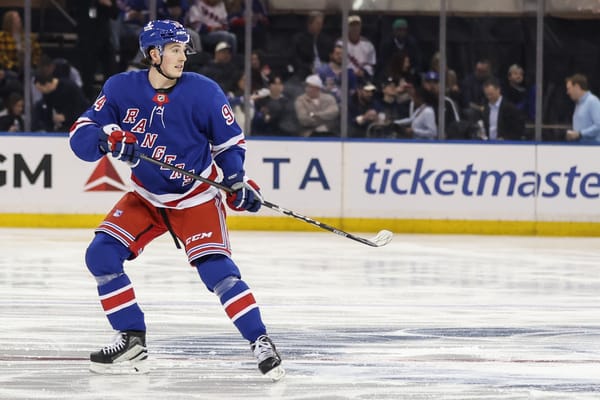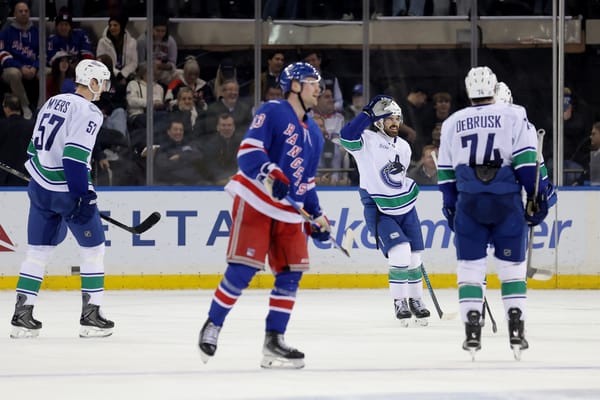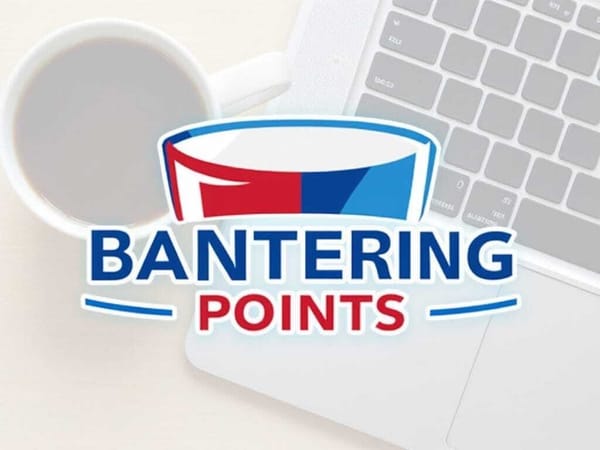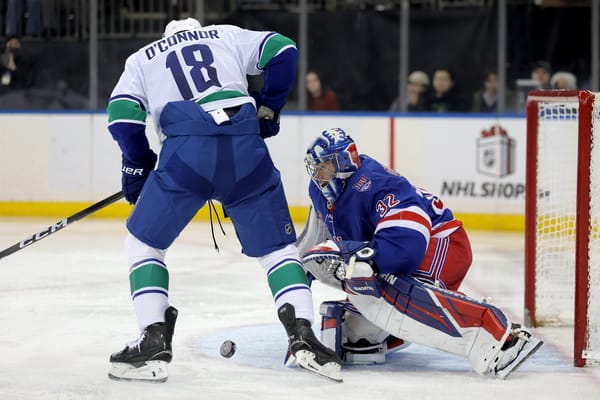In Support of Super Teams (And How the New York Rangers Could Build One)
We all heard about the Erik Karlsson trade, I’m not going to rehash that or do a deep dive into what the Ottawa Senators got (ok fine, briefly: it wasn’t a good return). It’s also not news to any of us on the Banter that the New York Islanders lost their golden child John Tavares this summer to the Toronto Maple Leafs in free agency. In fact, I’m betting that most of us are still on some level smug that Islanders fans don’t really have any argumentative ground to stand on when talking trash in Penn Station before our preseason tilt in less than a week (!). And not to bring up ancient history, but in case it slipped your mind, Ryan McDonagh is a newly re-signed member of the Tampa Bay Lightning.
Why am I bringing up all of this non-Rangers personnel news? Well, I want to drive home the point that the Rangers are going to be bad, but not just in a pity party sort of way. Rather, the Rangers are going to be bad because other teams have gotten good, and I mean really really good. Aside from the usual small potatoes trades that have gone down, or the medium sized moves that other teams have used to bolster their first and second pairings, a few teams have really done big things this soon-to-be-expiring offseason. That’s significant, because if the NHL is even a little bit savvy, they’ll take note and not just adapt to the changing landscape but actively fan the flames.
With the crop of young, truly elite talent growing year after year — Dahlin, Svechnikov, Pettersson — as well as youngsters already coming into their own like Auston Matthews (20 years old, 129 points n 144 regular season games) and Patrik Laine (also 20, also nearly point per game with 134 points in 155 October-April contests), this league is only going to get more exciting. But as the league’s talent level increases at the top end, and I’d argue at the median level as well, we’re going to see more and more cap crunches. That’s why it’s time to abolish the hard cap; it’s time for super teams.
With Karlsson, the San Jose Sharks now have three league-elite talents on defense, one of them a sure-shot Hockey Hall of Fame inductee and two other likely candidates as well. That’s in addition to Joes Pavelski and Thornton, an often-slept-on goal scoring talent and a first-ballot HHoFer in his own right, respectively. There’s Evander Kane, Tomas Hertl, Joonas Donskoi, and some other youngsters too, who if they come into their own sooner rather than later, will make for a stacked Sharks lineup.
I’m not going to dwell much on the Leafs, because you can all read their depth chart well enough. It’s Matthews, Tavares, and Kadri down the middle, Nylander, Marner, Kapanen, et al down the wings, and on defense well, does it even matter? Let’s say they add to the backend at the deadline. That’s an almost immediate Cup favorite right up north there.
Similarly, the Lightning have some of the best natural goal scoring talent there is, plus the reigning Norris Trophy winner, the best (in my opinion) stay-at-home d-man in the league in Anton Stralman, and our erstwhile captain, Ryan McDonagh. Their goalie, Andrei Vasilevskiy, isn’t so bad either — a Vezina finalist in his own right last season.
These are super teams, plain and simple, and if a squad like the Carolina can add some high-end scoring talent aside from Svech, who I think is a 40-goal guy next season, their blueline will take care of the rest.
Obviously there’s the Nashville Predators and the Winnipeg Jets, and provided the Vegas Golden Knights weren’t just a flash in the pan, they’ve got a great lineup on their hands with the additions of Max Pacioretty and Paul Stastny. None of this is taking into account the excellent, probable 20-goal scorers (maybe 30 depending on the year and the talent level) coming up through the draft and entering the league at a young age, guys like Kailer Yamamoto, Mathew Barzal, Eeli Tolvanen, and so on. That’s in addition to proven scoring talent ranging in age from Nikolaj Ehlers to Vincent Trochek.
What I’m saying is that there’s plenty of players in this league who can play hockey at a high level, so it’s never been a better time to be a hockey fan. Now imagine they weren’t spread out among lousy teams. What if we could watch teams that had more than two or three of these guys? What if every playoff matchup were like last year’s Western Conference Final? Could be cool.
There’s two reasons I think the NHL should get with the times and begin to encourage super teams to develop. The first is somewhat selfish: I think it would be fun. Beyond that though, is that I think it would be good for the sport. Think of the great rivalries like the Red Wings and Avalanche, the legendary Montreal Canadiens teams, and of course the 1980s Oilers (not going to mention the Islanders dynasty... wait woops). These are things people still talk about, but how many of us are going to say ten years down the line “wow, I’m so glad there was some vague sense of parity in the late aughts/most of the 2010s”? By the way, there wasn’t. Lest we forget, the Penguins repeated, the Blackhawks won way too many times, and the Kings had two exceptional runs as well. If the salary cap, draft lottery, and free agency configuration are all meant to mix it up and allow other teams to win the Cup, well, it didn’t work.
So why not do it? Having the same Cup champions over and over would at least be semi tolerable if it were a clash of the titans in the Final like we get in basketball, and while the drawback there is that it’s the same two teams year in, year out, my point in bringing up the huge talent pool the NHL has at its disposal (plus, the randomness that is hockey in general) is that we might not. Instead, we probably would get around 6-8 incredibly stacked rosters, with each team having as good of a chance as any at winning it all. It’d be at least as good as the system we have now where either a team becomes a dynasty by winning the 1st overall draft pick(s) at the right time and then building around truly generational talents (the Pittsburgh Penguins) or doing so but failing miserably (the Edmonton Oilers).
A little bit of rhyme or reason (or chaos, depending) would do this league well, with the dependent variable being where players want to go in free agency, based on what their suitors have built through a more equitable and player-friendly draft, and a loosened trade market. I’m not going to get into the nitty gritty of how to do all of this stuff, because smarter people than me can put together actual, feasible alternatives to the current regime, but our hockey outcomes are directly determined by our institutional configuration, and a conscious effort to remake that landscape could have exceptional results that would help grow the game. Obviously talent is talent, but would a generation of kids have grown up playing hockey with the Sakic curve if the Colorado Avalanche weren’t able to assemble one of the greatest teams of all time? Let’s imagine he were playing in today’s league and wound up on the Florida Panthers. Well, there goes that.
So how does this relate to the Rangers? Well, I’m not sure if you’ve heard, but it’s a rebuild we’re in right now, and although the pipeline has been replenished quite significantly, there remains the looming question of whether or not the Blueshirts will be able to compete without the kind of world-breaking talent that basically only comes from landing the first overall pick through chance. A league-wide policy framework more friendly to building super teams however might benefit the Rangers, paving something of a path forward that, while utterly lacking in guarantees, would at least make for some fun hockey.
Let’s look at the free agent classes of the next few years. Next year there’s a few, how do we say, decent talents on the market, provided they don’t re-sign before then who could significantly accelerate the Rangers turnaround. The three most relevant names are of course Erik Karlsson, Artemi Panarin, and Mark Stone. Beyond that there’s Jordan Eberle, Joe Pavelski, and Wayne Simmonds, not to mention Anton Stralman and Tyler Myers (for the third pairing, of course). Now, that might not seem like the greatest class of UFAs, so let’s go on to the following summer. Nicklas Backstrom, Taylor Hall, even Mikael Granlund could be excellent pickups, were money no object, but the biggest fish is of course swimming by the year after that, in 2021-22. What might be the craziest FA sweepstakes ever is laying in wait that July: Alex Ovechkin. If the NHL had player opt-outs, easier mechanisms for shedding bad contracts, a more liberal culture overall encouraging players to build cadres of elite talent and moving from place to place, the Rangers might be able to put together a way competitive team.
Instead, what we’re likely left with is a “hope and pray” approach. Will we be bad enough to land Jack Hughes? Let’s hope! If not, well, it’s going to be a long rebuild, and with poor management we could just as well wind up in a Carolina situation: lots of mid-first-rounders and not a lot of success, all just a waiting room for an excellent pick in an excellent year. Of course there’s tons of other variables here, but imagine for a second that the Rangers did in fact manage to land one or two elite level free agents, ones whose primes don’t matter as much because their abilities can transcend this prison of mortality.
We’ve got Lias Andersson, Filip Chytil, and one of Mika Zibanejad or Kevin Hayes hanging around for the next couple years down the middle, but let’s say we land Nicklas Backstrom. In two seasons, having gotten Artemi Panarin the previous summer (which would be this one), between his BFF and the next best Russian scoring winger there is, The Great Eight might just be tempted to give New York a try. So that’s four centers ranging from excellent to pretty good, and two of the best goal scorers in the world. Re-sign Chris Kreider if you can, sprinkle in Vitali Kravtsov and Pavel Buchnevich, and that’s some forward corps (Ronning and Howden being on the outside looking in would be just insane). On defense we’d be looking at a third-pairing of Kevin Shattenkirk and Anton Stralman, with Nils Lundqvist, K’Andre Miller, and Brady Skjei filling out the top-four from there, maybe someone acquired via trade added as well. Even if you don’t do such a great job rebooting the defensive group, that’s a hell of a scoring situation you’ve got on your hands, not unlike SJ’s Karlsson/Burns/Vlasic half d-corps or TML’s indomitable center depth.
This is all just one way to configure the team of course; there’s more than one method to get the job done, so I’m advocating for here is a CBA that allows greater flexibility in doing so. The problematic thing however, is that there doesn’t seem much impetus to change the status quo, and even if there were, the institutional configuration we’re dealing with heavily favors owners who primarily keep the salary cap around to limit player earnings and pocket the profits. It would take a major paradigm shift to move that amount of power from the owners to the players, but my point stands.
In 2014, when Canada put together its Olympic roster (Rick Nash was on the fourth line, if you recall), numbers were thrown around to the tune of a $150m combined cap hit for the team. Why don’t we allow that sort of thing? Why don’t we encourage it? It’d be good hockey at the very least, but more importantly, for our purposes, it might pave the way back to Stanley Cup glory.




